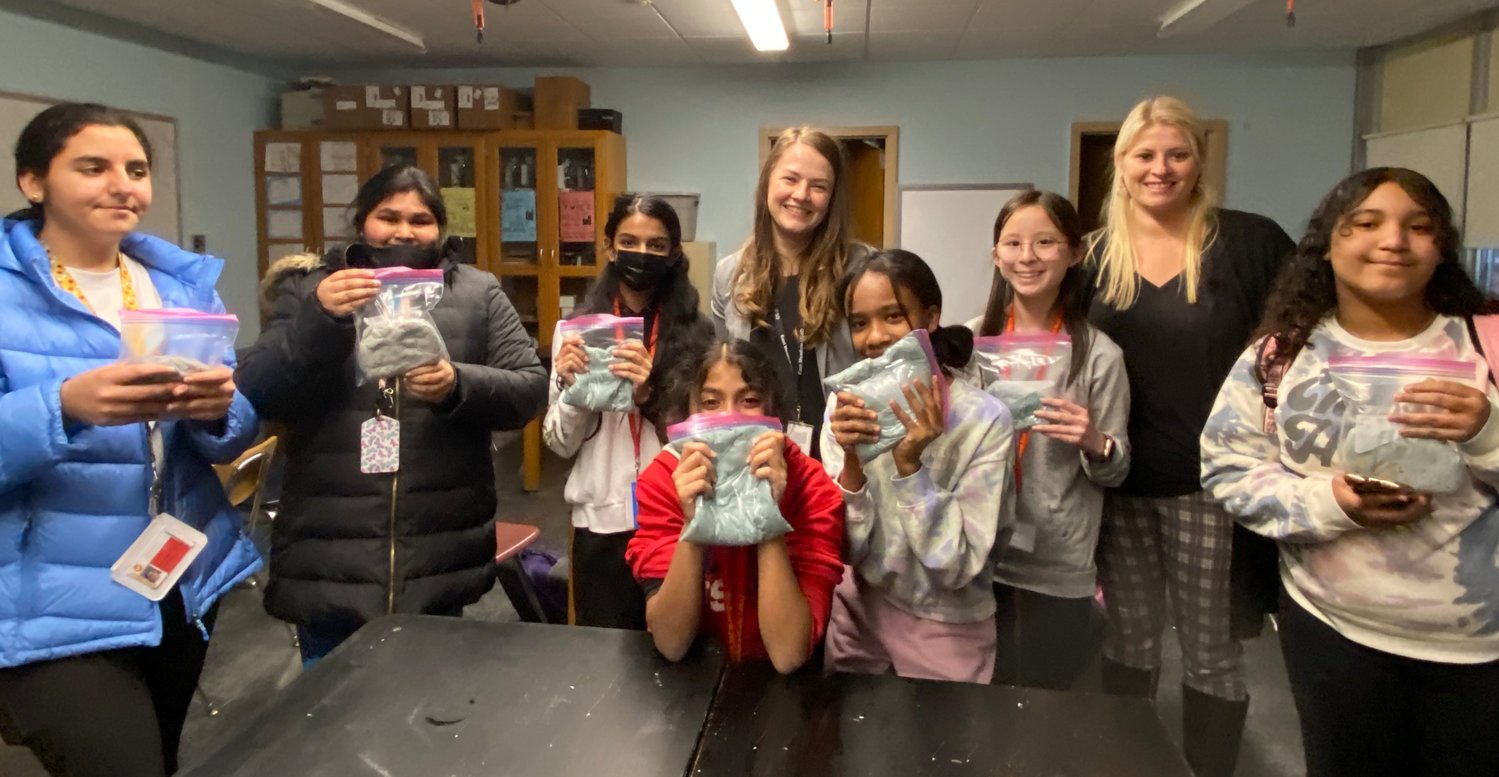Friday, April 19, 2024
 44.0°,
Mostly Cloudy
44.0°,
Mostly Cloudy
Mini-clubs let middle-schoolers try new activities
Socializing, and learning something new

Trying out a new skill or wanting to learn something different can be daunting, especially if you’re not sure you want to commit the time to a class or year-long club.
Luckily for middle school students at Woodland and Clarke, they can take part in the district’s new mini-club program, and give a new activity a shot for just six weeks.
The idea of mini-clubs sprang from the minds of the middle school principals, and the funds came from the American Rescue Plan money the district received. The state was very specific about what the ARP funds could be used for.
The ARP State reserve grants, totaling nearly $1.6 million, called for 5 percent to be allocated to learning loss, 1 percent for summer activities, and 1 percent for after-school activities.
According to Dave Casamento, assistant superintendent for curriculum and instruction, middle school principals looked for activities for the students because participation in sports drops in the winter. Casamento told the school board on Jan. 11 that mini-clubs are just one of the new ideas that the ARP money allowed them to try out.
“(The middle schools had) kids who start losing those connections to the schools,” Casamento said. “So each of the principals went to their teachers and said, ‘What kinds of activities would you want to run?’ and so the teachers put forth things that they would like to do with kids.”
Most of the mini- clubs started in October or November, and lasted five or six sessions. Each middle school offered roughly 10 activity options. Flyers and morning announcements spread the word.
Coming back from the pandemic, mini-clubs give students the opportunity to socialize more, and get back into in-person activities.
“It’s been nice after Covid, kids can sit next to each and touch each other’s bracelets and help each other,” said Lauren Clarke, a sixth and seventh grade special education and math teacher at Woodland who decided to do a mini-club about bracelet making. “It’s almost like a little therapeutic session, the kids pick out different music to play in the background and meet each other, and just relax and learn a new thing.”
Clarke said over 40 students showed up to learn how to make bracelets, which she chose because she loved doing it when she was young.
“It was good because the kids learned to help each other,” she said. “They were making new friends and also helping each other which was really nice to just observe them talking to each other.”
Each club is open to any student grades six through eight. They meet weekly for an hour after school. Students can go one for meeting or all of them, there’s no pressure.
Shahla Momtahan, a seventh and eighth grade technology teacher at Woodland decided to do a coding club. For the first couple of sessions, students made a personalized emoji.
“The environment was very, very friendly, I always put a lot of chocolates just to make it feel like home,” Momtahan said. “The result was amazing.”
She explained she’s always had trouble getting girls to want to code, but she found many came to her club. She entered two of the girls in a computer science competition where the eighth grade girls excelled in problem solving.
Guidance counselors at both Clarke and Woodland designed clubs that focused on mental health and wellness.
Alyssa Marino, a guidance counselor at Clarke started a wellness awareness club with teacher Marge Caughey where students went on nature walks, practice beginner’s yoga, learned breathing activities and spread wellness around the building.
“I think kids should understand the importance of wellness in regard to mental, physical and emotional wellness,” Marino wrote to the Herald. “The mini clubs are a great way for our students to have an opportunity to join in a variety of activities and feel more connected to Clarke Middle School.”
At Woodland, guidance counselors Kristen Sweeney and Logan Cole started the COPE mindful activities club where students made stress jars, sun catchers, completed different coloring patterns and puzzle, and at their latest meeting they made lavender scented playdough.
“It’s just to teach them different strategies, or what they could do when they’re feeling stressed or uncomfortable feelings,” Sweeney said. “They could bring these things home and do them at home too, so basically every club meeting they leave with a tool.”
Mini-clubs and regular clubs differ in length. Mini-clubs are intended to add extra socializing time for students since the pandemic.
“These clubs are great for their social skills and mental health because they lost out on a lot of opportunities,” Sweeney explained. “So when we came back full time in-person this year we definitely saw a regression in the social skills of students of all ages so the mini-clubs are just our district’s way of trying to add more.”
Allison Lim, a sixth-grader, said that she liked the club because it gave her something else to do other than going home, and because she likes peaceful things. She uses some of the techniques at home, such as coloring.
Usually 10 students show up for the COPE club. They spend the time chatting and completing a relaxing activity.
HELP SUPPORT LOCAL JOURNALISM
The worldwide pandemic has threatened many of the businesses you rely on every day, but don’t let it take away your source for local news. Now more than ever, we need your help to ensure nothing but the best in hyperlocal community journalism comes straight to you. Consider supporting the Herald with a small donation. It can be a one-time, or a monthly contribution, to help ensure we’re here through this crisis. To donate or for more information, click here.
Sponsored content
Other items that may interest you









